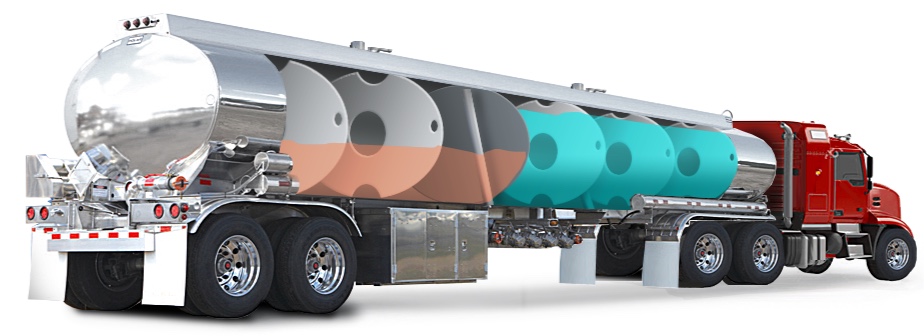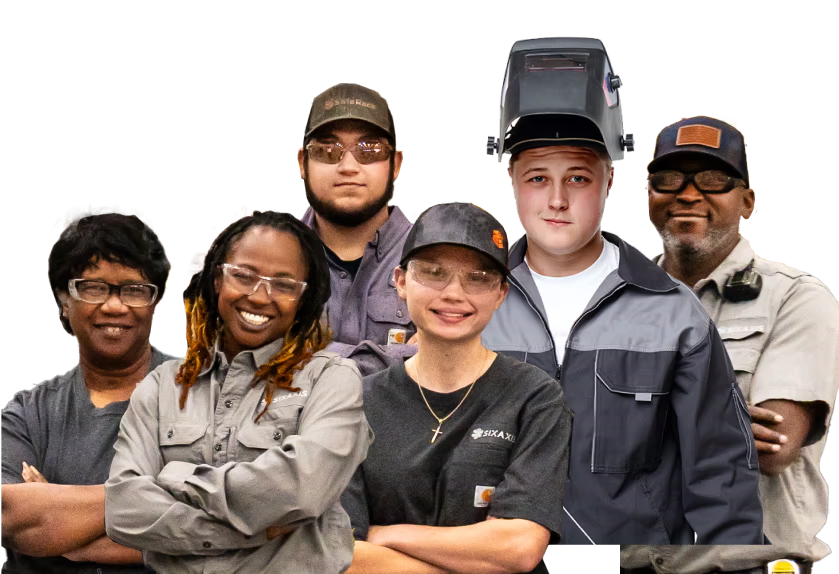On cold, dry afternoons, walking across a carpet to open the front door can create a spark that jumps between the hand and the doorknob. That release of electricity comes from a buildup of static electricity in the human body that can reach an 10-15 kV (kilovolts). The discharge of that voltage can measure just 20-30 mJ (milliJoule), well above the threshold for igniting propane, gasoline vapors, or even fine dust particles.
When trucks or trains load and unload liquids and dry materials, the friction builds up in the transfer of those materials creating static electricity. The charge level is higher for poorly conductive solvents flowing through plastic tubes. In addition, a fast flow rate or large amounts of air bubbles flowing through the tube can amplify the static electricity. Tank trucks loading propane, gas or flammable liquids can accumulate enough static electricity to emit 2,250 milliJoules. It only takes 26 milliJoules to ignite propane and 24 for gasoline vapor.
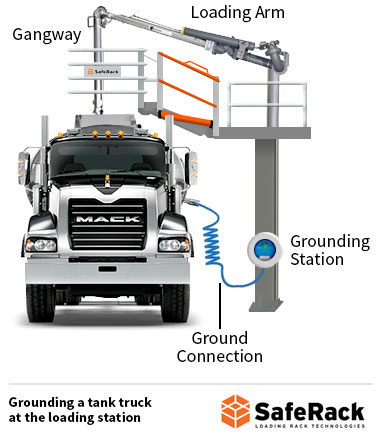
Flow electrification
When liquid or dry bulk materials pass through a pipe at a high flow rate, as it typically does in loading and unloading liquids from Truck and trains, the electrostatic charge of the flowing product generates static electricity. Large amounts of air bubbles and an increased flow rate can amplify the static electricity.
- Charge that moves along with the product flow
- Charge that is fixed to a solid surface and cannot move
Transferring materials generate static electricity.
Filling, dispensing, conveying, and tipping materials into vehicles or vessels generate static electricity simply through the movement of the material being processed or handled. The static electricity can ignite if the vessel or vehicle isn’t properly grounded
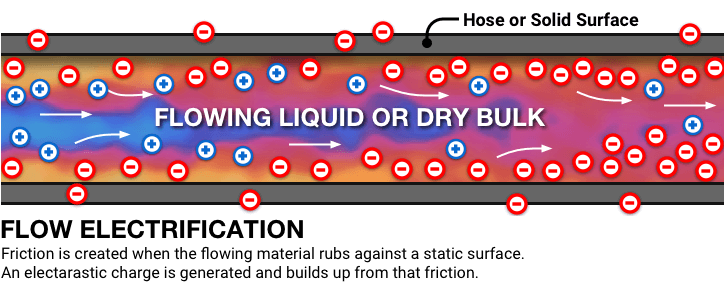
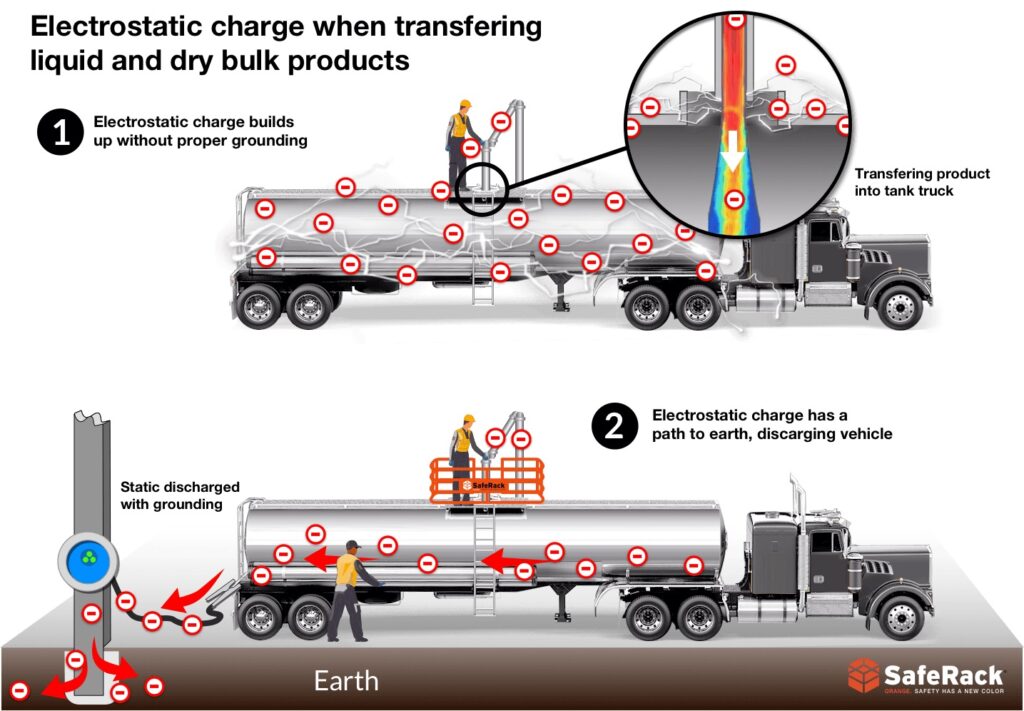
- Without Proper Grounding – When loading dry bulk or liquid products, moving material creates friction and an electrostatic charge builds on the vehicle’s surface. This buildup increases the risk of a static spark and ignition source.
- Static Discharge with Proper Grounding – If properly grounded, the electrostatic charge has a path to the earth, keeping charge from building up.
Material igniting when loading a truck without proper grounding
What is Grounding (also known as Earthing)?
All things want to neutral, so when a charge (positive or negative) builds up in an object, that excess charge will seek the path of least resistance to be neutral. Grounding (or Earthing) connects that object to the earth and discharges any built-up voltage. Why the earth? Because the earth is so big, it can easily absorb and neutralize any charge.

Air flowing over an object’s surface or liquids flowing through a pipe during loading and unloading vehicles build up a charge. For that voltage to be discharged, the vehicle must be connected to the ground through a copper or steel wire that’s attached to an electrode in the ground. Lines that are too long can have enough resistance to prevent static electricity from totally dissipating, and will seek a shorter path by jumping gaps in equipment, creating a spark or ignition source for flammable gases. Both the NFPA and API recommend that the resistance of these lines be measured at no more than 10 ohms end-to-end.
What is Bonding?
Bonding is connecting two conductive objects together, keeping each object at that same electrical charge. If one object builds up a charge, a spark could be created when that charge tries to neutralize itself by jumping a gap to another conductive object.
Railcars and tank cars have many metal and other parts. To discharge static electricity, all the parts have to be connected—bonded—so that electricity can freely flow through each object to the ground. That prevents one part from discharging to another even though they do not touch, just like a charged hand on a doorknob receives a startling result. That spark happened in nanoseconds before contact between the two as the charge jumped across the air.
Tank Truck Grounding (Earthing)
Loading procedure during transfers involves the driver connecting the truck to the Earth (grounding) before any other operations. The truck grounding system should have circuits that prevent the transfer of the fuel if the ground connection has not been made. Typically, the loading rack has a grounding system that connects to the truck.
Railcar Grounding (Earthing)
The tracks that railcars run on have their own grounding system. The wheel assemblies have metal-to-metal contacts so they are always grounded. But many railcars have wheel bearings that are not conductive, which makes the rest of the carriage assembly isolated electrically. Similar to truck, when railcars are loaded or unloaded, operators will use railcar grounding systems to discharge static electricity,
The wear pads on the carriage cast also isolate the assembly from the tank and fitting, so the procedure calls for grounding the tank to the loading/unloading rack during the transfers. Again, the system should have failsafe circuitry that shuts down transfers of fuel if the ground connection is lost.

SafeRack’s Grounding, Overfill & Monitoring Solutions
When working with petrochemical or other combustible liquids, safety cannot be overemphasized. It’s important to take every precaution to avoid accidents, and SafeRack makes that easy. Our industry experts and our technologically advanced overfill protection and ground verification systems help boost both safety and productivity. And we can help you select and install electronic rack equipment for accurate and reliable monitoring regardless of your railcar or tank-car operation’s needs.
More on Tanker Truck Safety
Around 25% of all freight hauled in the US is transported in tanker trucks, with nearly half of that being flammable liquids that have to be transferred on and off of vehicles (5 chemical truck loading rack essentials). With so much hazardous cargo on the nation’s roads, and the occurrence of cars driving under road tankers not uncommon, why are there so few disasters?
Read about all the tanker truck safety devices.
